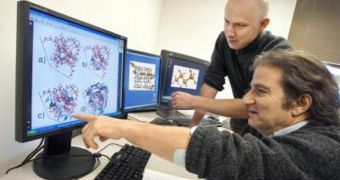One of the most important things chemists need to keep in mind when designing a new catalyst, or a chemical substance for that matter, is how precisely these molecules navigate the labyrinth of the chemical system they are placed in. Knowing this is of tremendous importance for the industry, as the knowledge could allow it to design more efficient chemicals that catalyze or conduct reactions in less energy-intensive conditions, for example. Now, American researchers devise a new way of monitoring the paths molecules take inside chemical systems.
Scientists at the US Department of Energy's (DOE) Lawrence Berkeley National Laboratory (Berkeley Lab) have created a new algorithm that makes it easier for researchers to run simulations of future chemical reactions, without actually having to devise a real setup. Future simulations will also be a lot easier and faster to compute, thanks to the improvements brought to the table by the new scientific effort. Details of the new work can be found in a paper entitled “Navigating molecular worms inside chemical labyrinths,” which appears in the latest issue of the respect journal Proceedings of the National Academy of Sciences (PNAS).
“Currently the major limiting factor in running molecular simulations for a large number of structures before they can be screened for useful materials is the need to visually analyze the structures to set up successful simulations. With our approach, such structural analysis can be done automatically, which speeds up the whole process of material screening,” Berkeley Lab Computational Research Division computational chemist Maciej Haranczyk explains. He is also a coauthor of the PNAS paper, and a 2008 Glenn T. Seaborg Fellow at the DOE lab. The other coauthor is University of California in Berkeley (UCB) Mathematics Department Professor James Sethian, leader of the Mathematics Group.
“In practice, most molecules of interest, even the simplest solvents or gases, rarely have a spherical shape, and treating molecules as such may lead to errors. Our molecular worms are able to change shape during the traversing of a chemical labyrinth, which allows them to reach areas not accessible to either a single large spherical probe or a rigid real-shape probe. This significantly extends the range of probes and structures that can be efficiently examined,” Sethian explains.

 14 DAY TRIAL //
14 DAY TRIAL //